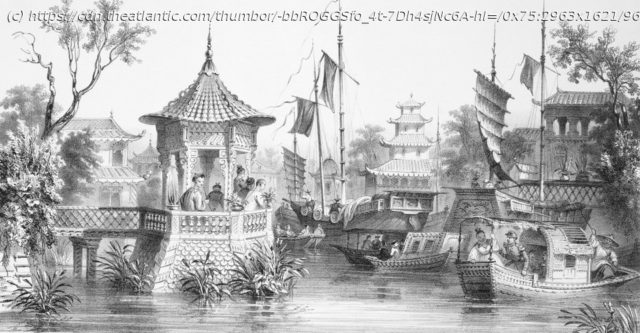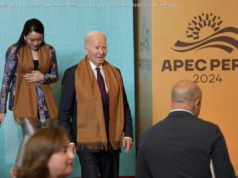From early on, it was the Chinese who were dominant.
As China comes into greater conflict with the West, and the United States in particular, now is a good time to consider the long arc of this relationship. In the West, Chinese history is commonly framed as having begun with the first Opium War, giving the impression that European powers always had the upper hand. But from the first direct contact between East and West—the arrival of the Portuguese in south China in the early 16th century—the Chinese were dominant.
In 1517, they appeared near the famed trading haven of Guangzhou, strange and unruly barbarians in wooden sailing ships. The language they spoke was an unintelligible mystery, their eight vessels puny by the standards of Zheng He’s treasure junks, and their ultimate origins a bit hazy. But like all other seaborne ruffians, they wanted to trade for the rich silks and the other wonders of China. The Chinese came to call them folangji, a generic term used at the time to refer to Europeans. More specifically, they were the Portuguese, and they were the first Europeans to sail all the way to China.
The adventurous mariners from the kingdom of Portugal had burst into the Indian Ocean in 1498, when Vasco da Gama rounded the cape of Africa and found his way to the southwestern coast of India. It was an Earth-rattling moment. Until then, Western Europe had been on the fringes of a global economy driven primarily by exchanges among China, India, and the Islamic world. Portugal was on the fringe of that fringe. All that would change. The arrival of the Portuguese in Asia heralded the coming ascendancy of the “West”—Europe, and later, America.
The Portuguese incursion was an equally crucial turning point in the Chinese history of the world. In fact, it would alter the course of China’s history more drastically than anything that came before, with the possible exception of the original Qin unification in 221 B. C. It was one of those rare moments in time when two historical narratives that had been meandering along quite separately suddenly came crashing into each other. They quickly became entangled, and would never again be unwound.
The Chinese couldn’t have known any of this in 1517. To them, the Portuguese seemed just like any other trade-hungry barbarians who had ventured to China by boat, horse, and camel over many centuries—whether Sogdian, Indian, Persian, or Japanese.
The Portuguese brought from Europe very different notions of trade and diplomacy than the Chinese had encountered before. More than that, though, the Portuguese were carrying on their wooden caravels an entirely unfamiliar culture from those the Chinese had previously met. Unlike the usual barbarians, who tended to adopt, at least in part, Chinese cultural practices, or participate in the rules and norms of the Chinese world order, the Portuguese and the Europeans who followed them to Asia thought their own civilization was superior. A clash was coming between peoples who each believed their civilization to be better than all others. The Chinese were simply unaccustomed to and unprepared for this sort of challenge from outsiders.
Foreign barbarians could defeat China militarily, and even overrun the empire, but, in Chinese eyes, the Mongols, Xiongnu, and other foreign pests never upset the Chinese self-perception of exceptionalism. Many of the supposed conquerors seemed more like the conquered. The Europeans, fully confident in the value of their own civilization, would present a wholly new threat to the Chinese world order.
There were already signs of what was to come from the earliest days of the Portuguese presence in Asia. When da Gama and his successors sailed into the Indian Ocean, they entered a world of well-established, multicultural trading networks and practices that had existed for eons. In the past, new entrants had simply joined the fray—including the Chinese. Zheng He, for example, wished to impress the world with Chinese power but didn’t seek to dominate the region and its trade. Wherever the Portuguese made landfall in Asia, the Chinese had already been. In southern India, da Gama was told tales of light-skinned, bearded men who had visited the coast generations earlier—references to Zheng He’s fleets, which had sunk their anchors off the coast almost a century prior.
The Portuguese, though, were bred amid the mercantilist brutality of Europe, where separation among trade, war, and power was barely perceptible. They intended not to simply participate in the trade between East and West, but to control it. And they used new, aggressive tactics and superior weaponry to impose their will. When they reached the flourishing entrepôt at Malacca in Southeast Asia, the Portuguese sought to conquer, which they did in 1511. The maritime states of South and East Asia had never seen anything quite like the Portuguese before. Bottled up by the paranoid Ming, the Chinese were not quite aware of who they were dealing with and what they were up to, either.
In the early 16th century, the Portuguese were about as much of a threat to the great Ming empire as gnats to an elephant. And at first, the Portuguese did little to challenge the Chinese system of trade.






